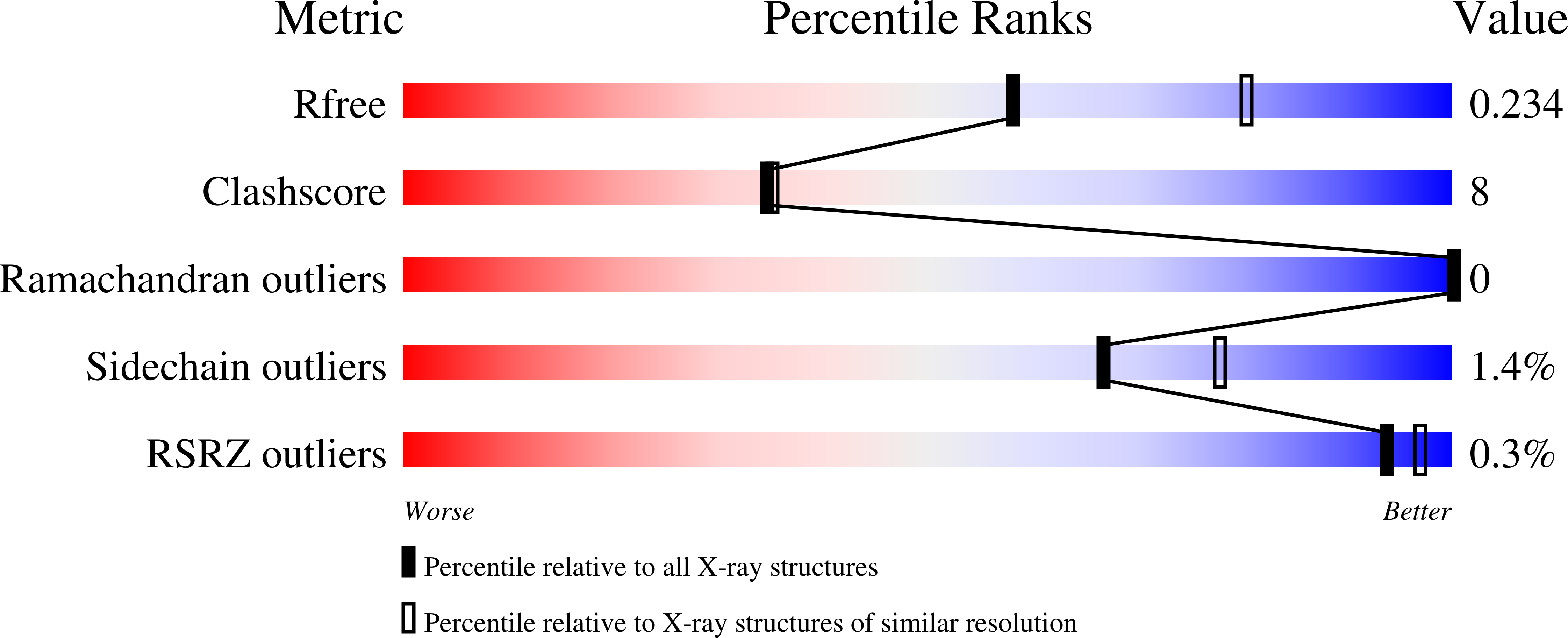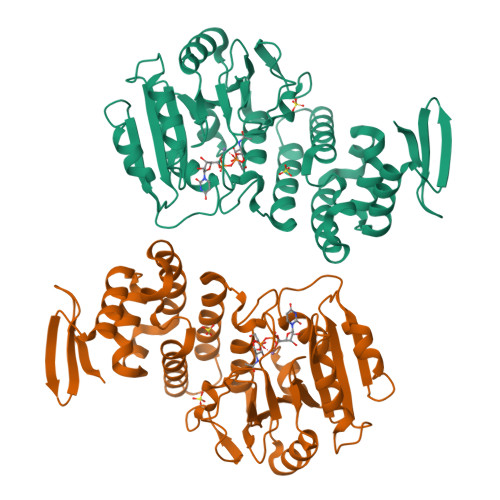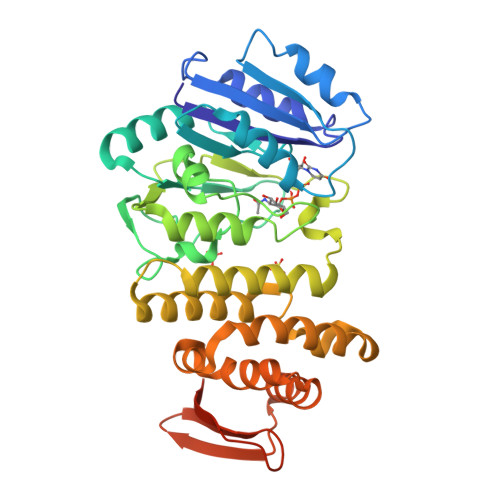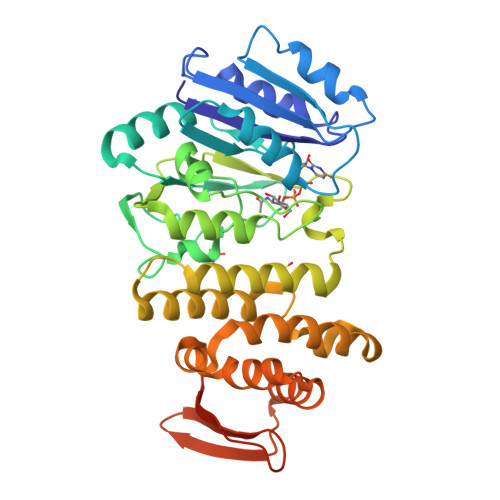Structure and Mechanism of Staphylococcus aureus TarS, the Wall Teichoic Acid beta-glycosyltransferase Involved in Methicillin Resistance.
Sobhanifar, S., Worrall, L.J., King, D.T., Wasney, G.A., Baumann, L., Gale, R.T., Nosella, M., Brown, E.D., Withers, S.G., Strynadka, N.C.(2016) PLoS Pathog 12: e1006067-e1006067
- PubMed: 27973583
- DOI: https://doi.org/10.1371/journal.ppat.1006067
- Primary Citation of Related Structures:
5TZ8, 5TZE, 5TZI, 5TZJ, 5TZK, 5U02 - PubMed Abstract:
In recent years, there has been a growing interest in teichoic acids as targets for antibiotic drug design against major clinical pathogens such as Staphylococcus aureus, reflecting the disquieting increase in antibiotic resistance and the historical success of bacterial cell wall components as drug targets. It is now becoming clear that β-O-GlcNAcylation of S. aureus wall teichoic acids plays a major role in both pathogenicity and antibiotic resistance. Here we present the first structure of S. aureus TarS, the enzyme responsible for polyribitol phosphate β-O-GlcNAcylation. Using a divide and conquer strategy, we obtained crystal structures of various TarS constructs, mapping high resolution overlapping N-terminal and C-terminal structures onto a lower resolution full-length structure that resulted in a high resolution view of the entire enzyme. Using the N-terminal structure that encapsulates the catalytic domain, we furthermore captured several snapshots of TarS, including the native structure, the UDP-GlcNAc donor complex, and the UDP product complex. These structures along with structure-guided mutants allowed us to elucidate various catalytic features and identify key active site residues and catalytic loop rearrangements that provide a valuable platform for anti-MRSA drug design. We furthermore observed for the first time the presence of a trimerization domain composed of stacked carbohydrate binding modules, commonly observed in starch active enzymes, but adapted here for a poly sugar-phosphate glycosyltransferase.
Organizational Affiliation:
Department of Biochemistry and Center for Blood Research, University of British Columbia, Vancouver, British Columbia, Canada.




















